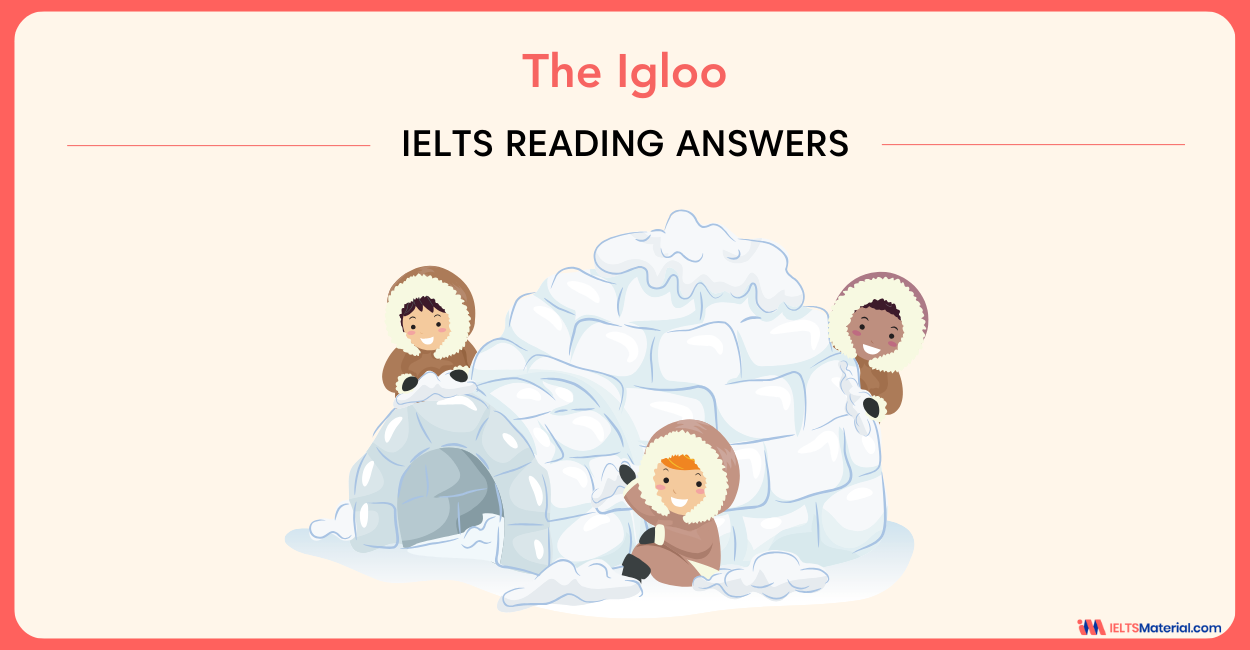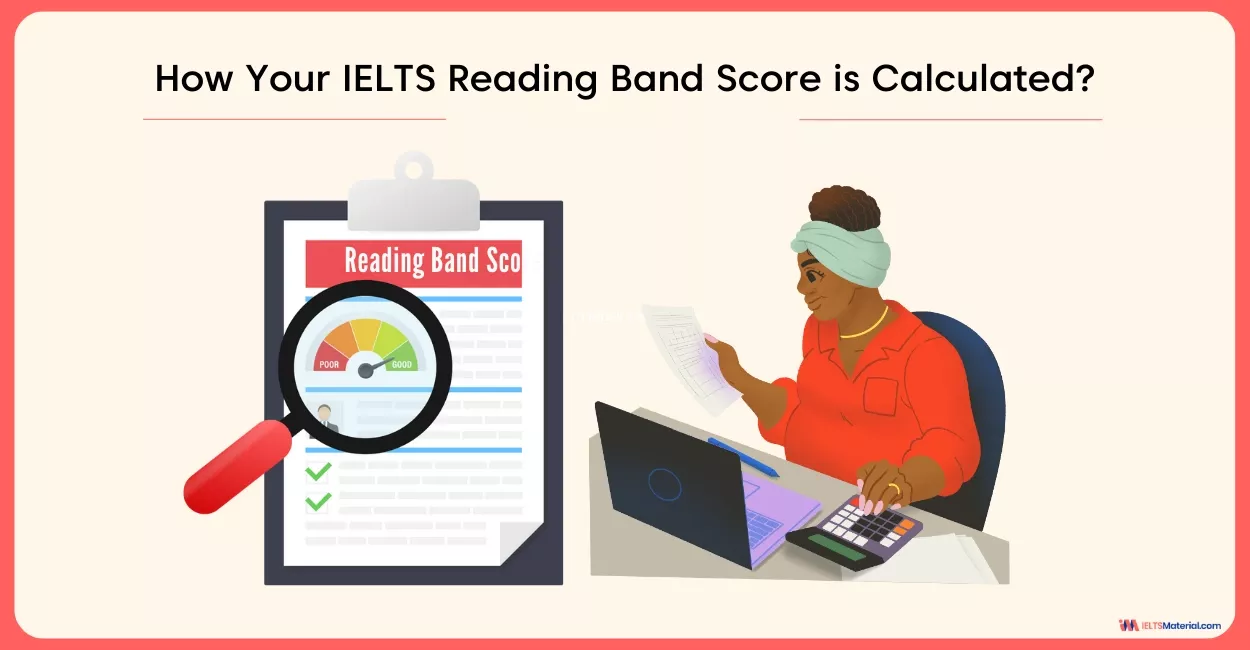Health In The Wild - IELTS Reading Answers
12 min read
Updated On
-
Copy link
Health In The Wild Reading Answers is an IELTS Academic Reading topic with 13 questions, covering completion questions and True/False/Not Given. Take the test and tally your answers with the given explanations to prepare better for a band score of 9.
Table of Contents

Limited-Time Offer : Access a FREE 10-Day IELTS Study Plan!
To perform well in IELTS Academic Reading, candidates must master skimming and scanning techniques while practicing reading samples like Health In The Wild IELTS Reading Answers. These skills save time and increase efficiency during the test.
Health In The Wild IELTS Reading Answers is an IELTS Academic Reading passage that discusses how many animals practice self-medication. Here, you will find questions of this IELTS Reading practice test, along with explanations and locations for the answers, and tips on how to approach IELTS Reading with strategies. Let’s get started!
Reading Passage for Health In The Wild Reading Answers
Go through the Health In The Wild IELTS Reading Answers passage given below and understand how to get more correct answers for a high IELTS band score.
You should spend about 20 minutes on Questions 1-13, which are based on the Reading Passage below.
Health In The Wild
Many animals seem able to treat their illnesses themselves. Humans may have a thing or two to learn from them.
A For the past decade Dr Engel, a lecturer in environmental sciences at Britain’s Open University, has been collating examples of self-medicating behaviour in wild animals. She recently published a book on the subject. In a talk at the Edinburgh Science Festival earlier this month, she explained that the idea that animals can treat themselves has been regarded with some scepticism by her colleagues in the past. But a growing number of animal behaviourists now think that wild animals can and do deal with their own medical needs.
B One example of self-medication was discovered in 1987. Michael Huffman and Mohamedi Seifu, working in the Mahale Mountains National Park in Tanzania, noticed that local chimpanzees suffering from intestinal worms would dose themselves with the pith of a plant called Veronia. This plant produces poisonous chemicals called terpenes. Its pith contains a strong enough concentration to kill gut parasites, but not so strong as to kill chimps (nor people, for that matter; locals use the pith for the same purpose). Given that the plant is known locally as “goat-killer”, however, it seems that not all animals are as smart as chimps and humans. Some consume it indiscriminately and succumb.
C Since the Veronia-eating chimps were discovered, more evidence has emerged suggesting that animals often eat things for medical rather than nutritional reasons. Many species, for example, consume dirt a behaviour known as geophagy. Historically, the preferred explanation was that soil supplies minerals such as salt. But geophagy occurs in areas where the earth is not a useful source of minerals, and also in places where minerals can be more easily obtained from certain plants that are known to be rich in them. Clearly, the animals must be getting something else out of eating earth.
D The current belief is that soil—and particularly the clay in it—helps to detoxify the defensive poisons that some plants produce in an attempt to prevent themselves from being eaten. Evidence for the detoxifying nature of clay came in 1999, from an experiment carried out on macaws by James Gilardi and his colleagues at the University of California, Davis. Macaws eat seeds containing alkaloids, a group of chemicals that has some notoriously toxic members, such as strychnine. In the wild, the birds are frequently seen perched on eroding riverbanks eating clay. Dr Gilardi fed one group of macaws a mixture of harmless alkaloid and clay, and a second group just the alkaloid. Several hours later, the macaws that had eaten the clay had 60% less alkaloid in their bloodstreams than those that had not, suggesting that the hypothesis is correct.
E Other observations also support the idea that clay is detoxifying. Towards the tropics, the amount of toxic compounds in plants increases-and so does the amount of earth eaten by herbivores. Elephants lick clay from mud holes all year round, except in September when they are bingeing on fruit which, because it has evolved to be eaten, is not toxic. And the addition of clay to the diets of domestic cattle increases the amount of nutrients that they can absorb from their food by 10-20%.
F A third instance of animal self-medication is the use of mechanical scours to get rid of gut parasites, in 1972 Richard Wrangham, a researcher at the Gombe Stream Reserve in Tanzania, noticed that chimpanzees were eating the leaves of a tree called Aspilia. The chimps chose the leaves carefully by testing them in their mouths. Having chosen a leaf, a chimp would fold it into a fan and swallow it. Some of the chimps were noticed wrinkling their noses as they swallowed these leaves, suggesting the experience was unpleasant. Later, undigested leaves were found on the forest floor.
G Dr Wrangham rightly guessed that the leaves had a medicinal purpose—this was, indeed, one of the earliest interpretations of a behaviour pattern as self-medication. However, he guessed wrong about what the mechanism was. His (and everybody else’s) assumption was that Aspilia contained a drug, and this sparked more than two decades of phytochemical research to try to find out what chemical the chimps were after. But by the 1990s, chimps across Africa had been seen swallowing the leaves of 19 different species that seemed to have few suitable chemicals in common. The drug hypothesis was looking more and more dubious.
H It was Dr Huffman who got to the bottom of the problem. He did so by watching what came out of the chimps, rather than concentrating on what went in. He found that the egested leaves were full of intestinal worms. The factor common to all 19 species of leaves swallowed by the chimps was that they were covered with microscopic hooks. These caught the worms and dragged them from their lodgings.
I Following that observation, Dr Engel is now particularly excited about how knowledge of the way that animals look after themselves could be used to improve the health of livestock. People might also be able to learn a thing or two, and may, indeed, already have done so. Geophagy, for example, is a common behaviour in many parts of the world. The medical stalls in African markets frequently sell tablets made of different sorts of clays, appropriate to different medical conditions.
J Africans brought to the Americas as slaves continued this tradition, which gave their owners one more excuse to affect to despise them. Yet, as Dr Engel points out, Rwandan mountain gorillas eat a type of clay rather similar to kaolinite – the main ingredient of many patent medicines sold over the counter in the West for digestive complaints. Dirt can sometimes be good for you, and to be “as sick as a parrot” may, after all, be a state to be desired.
Health In The Wild Reading Answers Questions
There are 13 questions in Health In The Wild Reading Answers, which presents three different IELTS Reading question types. They are:
- IELTS Reading True/False/Not Given (Q. 1-4)
- IELTS Reading Note Completion (Q. 5-9)
- IELTS Reading Summary Completion (Q. 10-13)
Set a timer and complete these questions within the allotted time!
Questions 1-4
Do the following statements agree with the information given in the Reading Passage?
In boxes 1-4 on your answer sheet, write
TRUE if the statement is true
FALSE if the statement is false
NOT GIVEN if the information is not given in the passage
1 It is for 10 years that Dr Engel has been working on animal self-medication.
2 In order to find plants for medication, animals usually need to walk a long distance.
3 Birds such as Macaw, are seen eating clay because it is a part of their natural diet.
4 According to Dr Engel, it is exciting that research into animal self-medication can be helpful in the invention of new painkillers.
Questions 5-9
Complete the notes below using NO MORE THAN ONE WORD from the passage.
Write your answers in boxes 5-9 on your answer sheet.
|
Date |
Name |
Animal |
Food |
Mechanism |
|---|---|---|---|---|
|
1987 |
Michael Huffman and Mohamedi Seifu |
Chimpanzee |
5 …………… of Veronia |
Contained chemicals named 6 …………… which can kill parasites |
|
1999 |
James Gilardi and his colleagues |
Macaw |
Seeds (contain 7 …………… ) and clay |
Clay can 8 …………… the poisonous contents in food |
|
1972 |
Richard Wrangham |
Chimpanzee |
Leaves with tiny 9 …………… on surface |
Such leaves can catch and expel worms from intestines |
Questions 10-13
Complete the summary below using words from the box.
Write your answers, A-H, in boxes 10-13 on your answer sheet.
Though often doubted, the self-medicating behaviour of animals has been supported by an increasing amount of evidence. One piece of evidence particularly deals with 10 …………… , a soil-consuming behaviour commonly found across animals species, because the earth, often clay, can neutralize the 11 …………… content of their diet. Such behaviour can also be found among humans in Africa, where people purchase 12 …………… at market stalls as a kind of medication to their illnesses. Another example of this is found in chimps eating leaves of often 13 …………… taste but with no apparent medicinal value until its unique structure came into light.
|
A mineral |
B plants |
C unpleasant |
D toxic |
|
E clay tablets |
F nutritional |
G geophagy |
H harmless |
Health In The Wild IELTS Reading Answers with Location and Explanation
Compare your answers for Health In The Wild IELTS Reading Answers, with the answer key below. Make sure to create customized strategies from the feedback from the practice of this IELTS Reading recent actual test.
1 Answer: TRUE
Question type: True/False/Not Given Questions
Answer location: Paragraph A, line 1
Answer explanation: In the said paragraph, there is a line “for the past decade Dr. Engel, a lecturer in environmental sciences at Britain’s Open University, has been collating examples of self-medicating behaviour in wild animals” which confirms that Dr. Engel was working on the wild animal medication from past 10 years. The term “decade” has been paraphrased to 10 years.
2 Answer: NOT GIVEN
Question type: True/False/Not Given Questions
Answer location: N/A
Answer explanation: None of the passages confirms or denies that in order to find the plant for medications animals needs to take a long walk.
3 Answer: TRUE
Question type: True/False/Not Given Questions
Answer location: Paragraph D, line 4
Answer explanation: If you read thoroughly there is a line in the said paragraph, that claims that “in the wild, the birds are frequently seen perched on eroding riverbanks eating clay.” Since the birds in Macaw are seen eating clay, it signifies that it’s part of their diet.
4 Answer: FALSE
Question type: True/False/Not Given Questions
Answer location: Paragraph I, line 1
Answer explanation: If you read thoroughly, this entire paragraph further discusses the point of Dr. Engel about animal health. It is also clear from the line, “Dr Engel is now particularly excited about how knowledge of the way that animals look after themselves could be used to improve the health of livestock. ” Here, the doctor is opining that the obtained knowledge can help improve the health of animals, and not that animal self-medication can be helpful in inventing new medications.
5 Answer: pith
Question type: Note Completion
Answer location: Paragraph B, line 2
Answer explanation: The answer is clearly mentioned in the said paragraph and line, it is said that “local chimpanzees suffering from intestinal worms would dose themselves with the pith of a plant called Veronia.” Here, the term ‘dose themselves’ means eat which in turn refers to the food they eat. Hence, it signifies that chimpanzees eat these plants to fight intestinal worms.
6 Answer: terpenes
Question type: Note Completion
Answer location: Paragraph B, line 2
Answer explanation: The answer is clearly mentioned in the said paragraph and line, it is said that “this plant produces poisonous chemicals called terpenes. Its pith contains a strong enough concentration to kill gut parasites.” Hence, its evident that plant contains poisonous chemicals known as terpenes.
7 Answer: alkaloids
Question type: Note Completion
Answer location: Paragraph D, line 3
Answer explanation: In the said paragraph, you can refer to, “Macaws eat seeds containing alkaloids, a group of chemicals that has some notoriously toxic members, such as strychnine.” Here, the given line confirms that Macaws eat seeds which contain alkaloids.
8 Answer: detoxify
Question type: Note Completion
Answer location: Paragraph D, line 2
Answer explanation: A line in the said paragraph, “Evidence for the detoxifying nature of clay came in 1999” confirms that there is evidence which proves that clay can detoxify poisonous content in food.
9 Answer: hooks
Question type: Note Completion
Answer location: Paragraph H, line 4
Answer explanation: In the said paragraph, you can refer to, “the factor common to all 19 species of leaves swallowed by the chimps was that they were covered with microscopic hooks.” Hence, it confirms that information has been paraphrased in the question that leaves with tiny hooks on the surface was swallowed by chimpanzees.
10 Answer: G
Question type: Summary Completion
Answer location: Paragraph C, line 2
Answer explanation: A line in the said paragraph, “Many species, for example, consume dirt a behaviour known as geophagy” confirms that the self-medicating behavior of animals or behaviour of consuming dirt is known as geophagy.
11 Answer: D
Question type: Summary Completion
Answer location: Paragraph D, line 1
Answer explanation: The answer is clearly mentioned in the said paragraph and line, it is said that “the current belief is that soil—and particularly the clay in it—helps to detoxify the defensive poisons that some plants produce in an attempt to prevent themselves from being eaten.” Hence, this statement confirms that clay can help to neutralize toxins.
12 Answer: E
Question type: Summary Completion
Answer location: Paragraph I, last line
Answer explanation: In the said paragraph, there is a line “the medical stalls in African markets frequently sell tablets made of different sorts of clays, appropriate to different medical conditions.” Hence, the term “African markets sell tablets made of clay” has been paraphrased to “humans in Africa purchase clay tablets.”
13 Answer: C
Question type: Summary Completion
Answer location: Paragraph F, line 4
Answer explanation: A line in the said paragraph, “Some of the chimps were noticed wrinkling their noses as they swallowed these leaves, suggesting the experience was unpleasant” confirms that chimps experience unpleasant taste when they swallow leaves.
Tips for Answering the Question Types in Health In The Wild Reading Answers
Let’s have a look at some specific IELTS Reading tips and techniques to solve each question type given in Health In The Wild IELTS Reading Answers.
Questions 1-4 (True / False / Not Given)
- Look for exact numbers and time references. Q1 mentions "10 years" → Verify in Paragraph A where Dr. Engel’s research duration is stated.
- Find direct mentions of distance in Q2. If the passage does not mention how far animals travel to find plants, the answer is Not Given.
- Check if the question changes the meaning of the passage. Q3 states birds eat clay because it is "part of their natural diet" → Paragraphs D & E mention clay detoxifies poison, not a diet necessity.
- For Q4, check the specific phrase ‘new painkillers’. Dr. Engel talks about livestock benefits (Paragraph I), but painkillers are not mentioned. If an exact keyword is missing, the answer is Not Given.
Questions 5-9 (Note Completion – ONE WORD ONLY)
- Identify the structure of the note table & locate the correct paragraph. For Q5, ‘1987’ is a key date. Find it in Paragraph B where Huffman & Seifu studied chimps. As the food they consumed is the ‘pith’ of Veronia, the answer is ‘pith’.
- Find scientific terms for Q6. Paragraph B mentions terpenes as the active chemicals killing parasites (answer: terpenes).
- For Q7, check the specific content of seeds. Paragraph D states macaws consume alkaloids (answer: alkaloids).
- For Q8, understand the function of clay. Paragraph D states clay helps in detoxification (answer: detoxify).
- For Q9, focus on the physical properties of leaves. Paragraph H states leaves have microscopic hooks (answer: hooks).
Questions 10-13 (Summary Completion – Choose the Correct Word)
- Identify synonyms in the question and passage. Q10 talks about soil consumption. The passage calls this geophagy (answer: G).
- Q11 mentions "neutralize" (which means to reduce harmful effects). Paragraph D discusses toxins in food and how clay neutralizes them (answer: D - toxic).
- For Q12, look for market purchases. Paragraph I states clay is sold as clay tablets in African markets (answer: E).
- For Q13, check how leaves taste & why chimps eat them. Paragraph G mentions chimps wrinkle their noses because the leaves taste unpleasant (answer: C - unpleasant).
Ultimately, mastering skimming and scanning techniques is one of the essential time-efficient techniques for IELTS Reading. So, by refining these techniques through practice of Health In The Wild Reading Answers from IELTS Reading recent actual tests, you can significantly enhance your reading performance.
Check More IELTS Reading Answers
- Coastal Archaeology of Britain, Activities for Children, Mechanisms of Linguistic Change Reading Answers
- IELTS Academic Reading ‘The Nature and Aims of Archaeology’ Answers
- Bovids, Twin study: Two of a kind, The significant role of mother tongue language in education - Reading Answers
- The Sweet Scent of Success – IELTS Reading Answers
- Young Childrens Sense Of Identity Answers
- How Does The Biological Clock Tick Answers
- The Concept Of Role Theory Answers
- The Context Meaning And Scope Of Tourism Answers
- Twist In The Tale Reading Answers
- What Is A Port City Reading Answers
Practice IELTS Reading based on question types

Start Preparing for IELTS: Get Your 10-Day Study Plan Today!
Explore other Reading Topics

Kasturika Samanta

Kasturika Samanta

Kasturika Samanta

Kasturika Samanta
Recent Articles

Nehasri Ravishenbagam

Haniya Yashfeen

Haniya Yashfeen

Haniya Yashfeen




Post your Comments